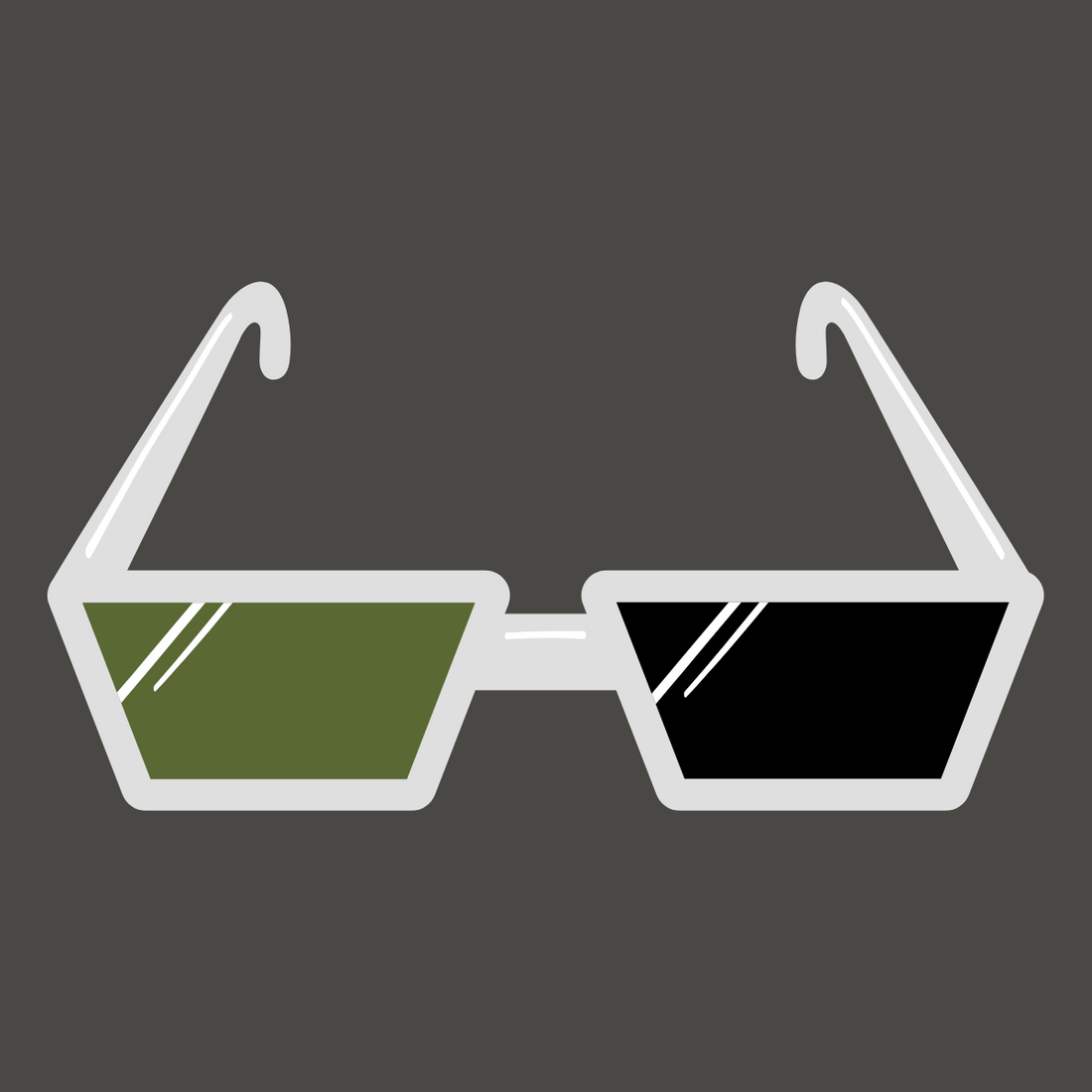
Polarization, Digital Screens, and the Problem
Most people buy polarized sunglasses thinking they’re getting the best. Polarization cuts glare, makes colors pop, and helps on the water or the road. For fishing, driving, or spending a day at the beach, polarized lenses work great.
But here’s the problem: polarized sunglasses don’t play well with digital screens.
If you’ve ever looked at a phone, GPS, cockpit display, or even an ATM screen and seen it go dark, distorted, or rainbow-colored, that’s polarization at work — and not in a good way.
How Polarization Works
Light waves travel in all directions. Polarized lenses filter out horizontal light waves — the ones that bounce off surfaces like water, roads, or glass. That’s why they reduce glare so well.
Here’s the simple version:
- Sunlight = scattered light in all directions.
- Glare = mostly horizontal light.
- Polarized lenses = block horizontal light.
The result is less glare and sharper vision. That’s awesome if you’re fishing and want to see into the water. But it becomes a problem when you bring digital screens into the picture.
Why Digital Screens and Polarization Clash
Digital displays — like MFDs (multi-function displays), HUDs (heads-up displays), LCD panels, or even smartphones — often use polarized light themselves.
When polarized sunglasses cross paths with polarized screens, the two filters don’t line up. Instead of a clear image, you get:
- Blackout – The screen looks totally dark at certain angles.
- Rainbow effect – The screen shows weird colors or looks warped.
- Reduced clarity – You can’t read the display easily.
For pilots, aircrew, or anyone relying on instruments, this isn’t just annoying. It can be dangerous. Even for everyday users, it’s frustrating when your glasses make your phone or GPS harder to see.
Why It Matters in Aviation and Tactical Environments
In aviation, especially in modern cockpits, instruments and displays are everything. Losing visibility because of your sunglasses isn’t an option. The same goes for tactical environments, where clarity and quick decisions are critical.
That’s one reason a lot of aviators avoid wearing sunglasses in the cockpit and just rely on their visors. The downside? Visors don’t provide the same scratch resistance, laser protection, or durability that purpose-built sunglasses can offer.
The truth is, people in these environments need sunglasses that can handle glare without interfering with digital screens.
Beyond the Cockpit
This isn’t only an aviation problem. Polarized sunglasses can cause issues for anyone who uses tech outdoors:
- Law enforcement checking in-vehicle displays or body-worn devices.
- Hunters and shooters relying on digital optics, scopes, or rangefinders.
- Boaters and fishermen reading sonar, radar, or chart plotters.
- Everyday people using smartphones, ATMs, or car GPS systems.
Glasses that distort or block screens aren’t useful.
The Flaw in “Traditional Polarization”
The big takeaway here is that not all polarization is created equal. Standard polarized lenses are great at killing glare, but they weren’t designed with digital technology in mind.
That’s the tradeoff:
- Glare reduction ✅
- Screen blackout and distortion ❌
Most people don’t realize it until they run into the problem themselves.
The Search for a Solution
This is where things get interesting. The eyewear industry has known about this issue for years, but very few brands have tried to solve it. Instead, they keep selling the same “traditional polarized” lenses and leaving customers to deal with the blackout problem.
The good news? There is a way to reduce glare without sacrificing screen visibility.
We’ve been working on that exact solution. It’s a design that gives you the benefits of polarization while staying fully compatible with digital screens like MFDs, LCDs, HUDs, and smartphones. No blackout, no rainbow, no distortion. Just clear vision — everywhere.
We’ll share more soon, but for now, let’s just say this: if you’ve been frustrated by sunglasses that don’t work with your gear, you won’t have to deal with that much longer.
The Bottom Line
Polarized sunglasses are useful — until they meet a digital screen. Then they become a headache. From cockpit instruments to everyday smartphones, screen blackout is a real problem that traditional lenses haven’t solved.
The need is simple: sunglasses that cut glare, protect your eyes, and work with modern tech. That’s where the future of eyewear is headed — and we’re building it.
